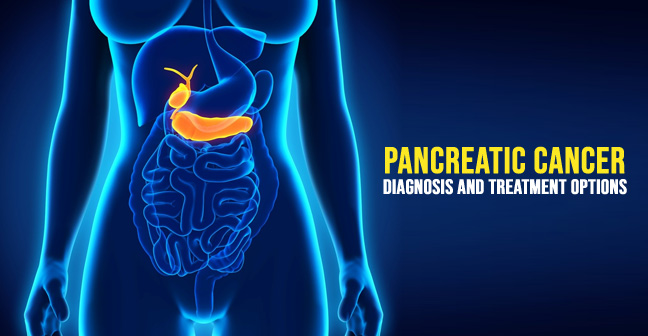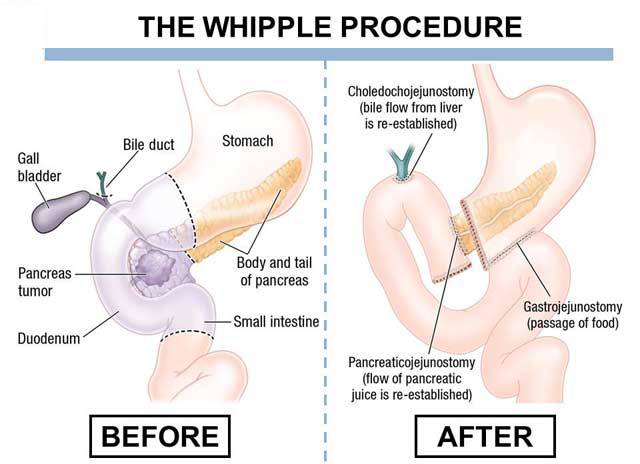
Today we will provide limelight to the diagnosis and pancreatic cancer treatment options. According to the medical experts, Pancreatic cancer possesses a negligible survival rate which means if you are suffering or you’re in danger zone with any of the pancreatic cancer causes, then try to avoid it. This is a type of silent cancer which with time develops in the body and doesn’t show any symptom.
Pancreatic cancer got attention after the Co-founder of Apple Steve Jobs died due to this. According to the cancer researchers, diagnosis of pancreatic cancer is tough through regular physical tests as the pancreas is present deep inside the body. Almost in all the cases, it is only possible to identify pancreatic cancer when it has infected the other nearby organs.
Now, one question will be striking to your mind that – Is there no possibility to detect pancreatic cancer at the initial stage? Yes, there is. Pancreatic cancer at the initial stage can be detected through the screening tests. Apart from the screening test, there are many other tests through which you can detect pancreatic cancer. Read about the Pancreatic Cancer diagnostic methods and their possible treatments in this article.
Pancreatic Cancer Diagnosis Procedure and Options
Imaging Tests
The doctors use imaging tests for the internal view of the body. X-rays, radioactive substances, magnetic waves, magnetic waves are applied to create the images of the interior of the body. Imaging tests are most effective when the doctors want
- To check cancer infected areas.
- To know whether cancer has reached the other nearby organs or not.
- To cross check the presence of cancer after the treatment.
- To check the recurrence of cancer after the treatment.
Magnetic Resonance Imaging (MRI)
Magnetic Resonance Imaging is the method of creating a detailed 2D and 3D view of interior organs with the help of magnetic and radio waves. There are two types of MRI:
- MR cholangiopancreatography (MRCP): MR cholangiopancreatography is used by the doctors when they want to check the pancreas and bile duct.
- MR angiography (MRA): Used when doctors want to have a glimpse of blood vessels.
Computed Tomography (CT Scan)
Computed Tomography is used when the doctors are willing to have a detailed cross-sectional image of the body. CT scan is also very efficient in telling about the spreading of pancreatic cancer and according to that, it is decided whether surgery is a good option to go or not. Also, if it is known that you have pancreatic cancer or you are experiencing the exact pancreatic cancer symptoms, doctors go for a particular type of CT scan called a pancreatic protocol CT scan or multiphase CT scan.
Ultrasound
Ultrasound is the technique in which the doctors use sound waves to get the image of the internal organs. There are two types of ultrasound techniques:
Abdominal ultrasound: In Abdominal ultrasound, wand-shaped scrutiny is moved over the abdominal skin to check the status of the pancreas.
Endoscopic ultrasound (EUS): Doctors choose Endoscopic Ultrasound over Abdominal Ultrasound due to its better accuracy. Also, Endoscopic Ultrasound can be helpful in detecting pancreatic cancer. This test is carried out by inserting an endoscope into the body through the digestive tract. The front tip end of the endoscope is attached with a small ultrasound probe to get the better status of internal organs.
Positron emission tomography (PET) Scan
In Positron emission tomography (PET), the patient is injected with a particular radioactive form of sugar which is mainly collected by the cancerous cells. Therefore, this diagnostic method is primarily used when the doctors want to check the spreading of cancer cells. For the better and quick results, a combination of PET and CT scan is used.
Angiography
Angiography is one of the most preferred post-treatment diagnostic tests. Angiography is used for checking the proper functioning of blood vessels. A small amount of contrast dye is injected into the artery so that appropriate x-rays can be taken off. Through Angiography, doctors can check whether there is any blockage in the flow of blood or any blood vessels is feeding cancer cells. Angiography is also used in post-treatment check-ups in order to view the proper health of the body.
Biopsy
The Biopsy is mainly done when the sign and symptoms don’t match the diagnostic test results. Therefore, we can say, Biopsy is a type of confirmation test. In Biopsy, a sample of infected tissue is taken and observed under the microscope. There are different methods in which Biopsy can be carried out like:
- Percutaneous (through the skin) Biopsy
- Endoscopic Biopsy
- Surgical Biopsy
Pancreatic Cancer Treatment Options
We can call pancreatic cancer, a silent killer as in most of the cases it is severe to get diagnosed at the initial stage. There are almost no symptoms which are experienced at the early stage, but this can again vary according to the body type. The various options which are available for Pancreatic Cancer treatment are:
Surgery
Surgery is the most often used type of pancreatic cancer treatment at the initial stage. Surgery is used when doctors target to remove a part or entire pancreas depending upon the size and spreading of cancer cells. The different types of surgeries are:
- Laparoscopy: Most of the time doctors starts with Laparoscopy. In this, a number of holes are made in the abdomen after giving anesthesia to the patient. The small/ tiny cameras are inserted into the body through these holes to find out whether can cancer cells have spread to other nearby organs or not.
- Surgery to remove a tumor: The surgery type varies according to the size and location of cancer.
- If the tumor is located in the head of the pancreas: If the cancer tumor is present on the head of the pancreas, doctors go for the operation called pancreaticoduodenectomy, also known as Whipple procedure. This is a complicated process to remove cancer from the head of the pancreas. Therefore a part of the stomach or nearby lymph nodes can also be removed along with the head of the pancreas.

- If a tumor is found in the body or tail of the pancreas: If the tumor is located in the body of the pancreas or at the tail, doctors go for surgery type called distal pancreatectomy. In this type of tumor, most of the time it is found that the spleen is infected. So, doctors might also remove the spleen during distal pancreatectomy.
- If the tumor has infected the whole pancreas: If the tumor has affected the whole pancreas, then complete pancreas has to be removed surgically. To do so, doctors go for total pancreatectomy. A healthy person can leave without a pancreas, but the patient will need lifelong insulin and enzyme replacement.
- If a tumor has started to infect nearby organs: This case occurs in the final stage of pancreatic cancer. Moreover, there are no surgical methods opted to treat cancer at this stage, but few experienced and qualified surgeons go for surgical methods at this stage too. They remove the infected organs and reconstruct the infected ones.
Chemotherapy
Chemotherapy is a treatment type in which the drugs are injected into the veins or given orally, in order to kill cancer. These Chemo drugs block the growth and further spreading of the cancer cells. Chemotherapy is best preferred for the final stage patients as it can control the growth and for prolonged survival of cancer cells. For the better results, doctors use the combination of chemotherapy and radiation therapy. The most often used chemo drugs approved by the US Food and Drug Administration (FDA) are:
- Capecitabine (Xeloda)
- Nab-paclitaxel (Abraxane)
- Irinotecan (Camptosar)
- Erlotinib (Tarceva), a type of Targeted therapy (see below)
- Nanoliposomal irinotecan (Onivyde)
- Fluorouracil (5-FU)
- Oxaliplatin (Eloxatin)
- Leucovorin (Wellcovorin)
- Gemcitabine (Gemzar)
Immunotherapy
Immunotherapy is the biologic therapy which is used to strengthen the immune system of the patient, which makes its capable of fighting the cancer cells. Another significant advantage of immunotherapy is that it doesn’t affect the healthy cells of the body whereas chemotherapy does.
Radiation Therapy
In Radiation Therapy, high energy beams of x-rays and protons are targeted to the infected cancer site in order to kill the cancer cells. Most of the time Radiation Therapy is combined with chemotherapy for best results.
These were some of the treatment methods for Pancreatic Cancer. Therefore, if you are experiencing any of the Pancreatic Cancer symptoms, then undergo the suggested detection tests. Also, if you have any query or you are in need of any treatment-related suggestion, contact our expert by filling the contact form. Don’t miss to read about the prevention methods of Pancreatic Cancer.
Leave a reply




Leave a reply